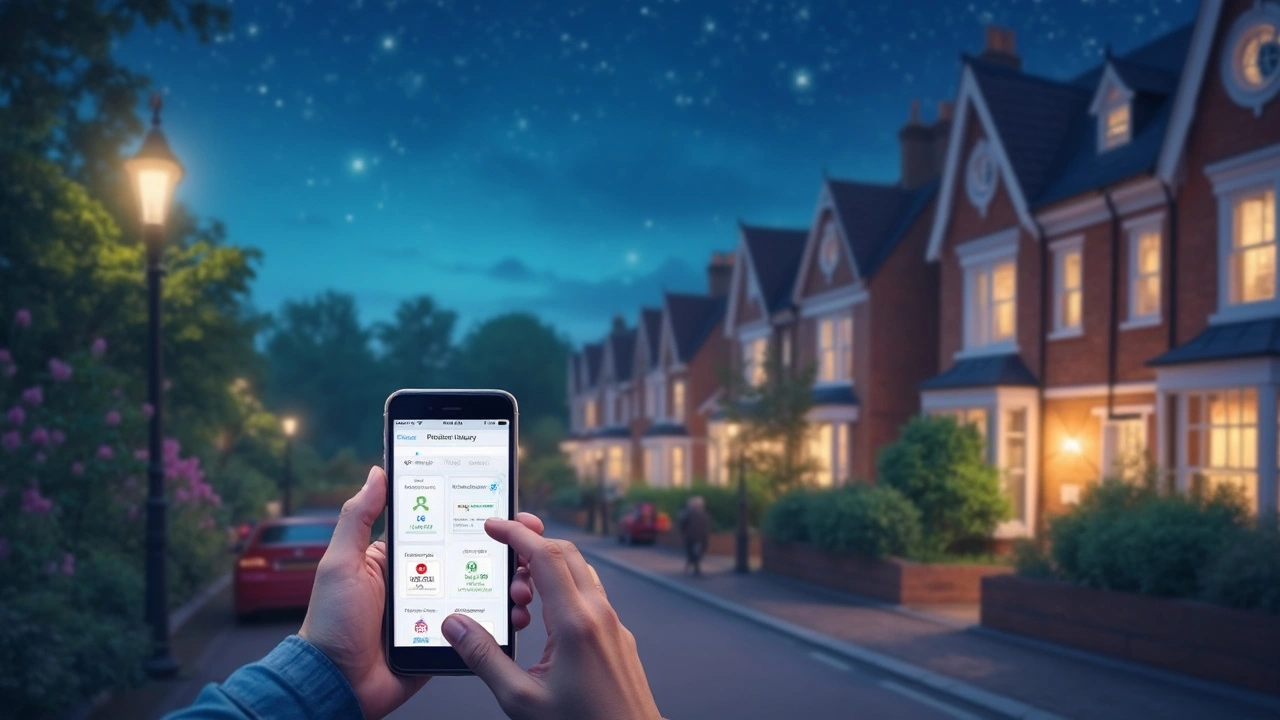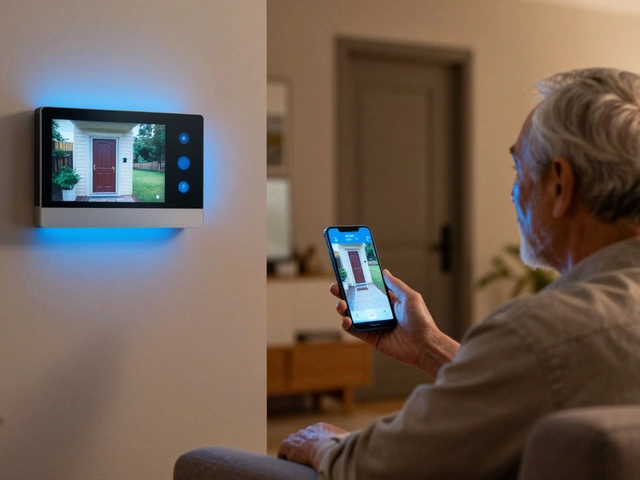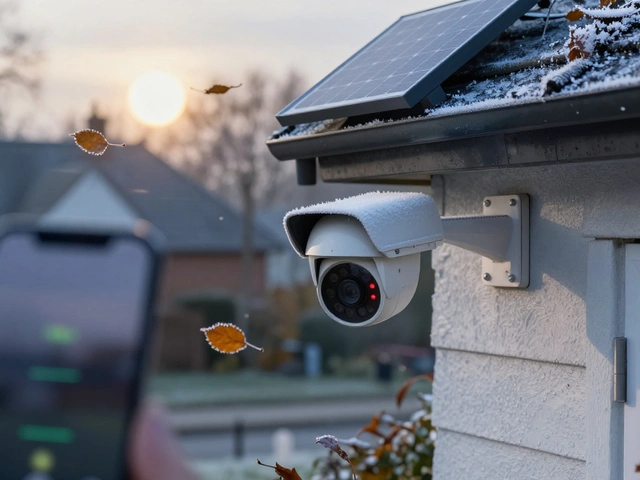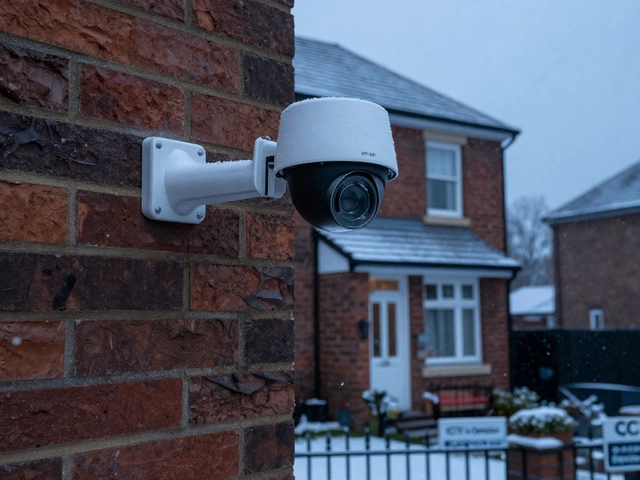So, you're thinking about getting a wireless alarm system? The options can feel endless, but fear not, we've got the scoop on what's what. First off, wireless alarm systems are all about ease and flexibility, free from the tangled mess of wires. You can typically expect a range of components working together like motion detectors, cameras, and sensors—all communicating wirelessly with a central hub.
Now you're probably wondering what makes one system better than another, right? It usually boils down to a few key features. Things like ease of installation, battery life, mobile access, and compatibility with other smart home devices are big selling points. Remote control via smartphone apps is often a game-changer—it lets you manage your security system no matter where you are.
But not all systems are created equal. Some companies really stand out. Frontpoint, SimpliSafe, and Ring are often talked about in glowing terms by folks who love reliability and cutting-edge tech. Their systems are typically DIY-friendly, with no need to hire someone for installation, saving you a few bucks.
- Understanding Wireless Alarm Systems
- Top Features to Look For
- Leading Alarm Companies
- Cost vs. Value
- Smart Home Integration
- Choosing the Right System for You
Understanding Wireless Alarm Systems
Alright, let's break down what wireless alarms are all about. At their core, these systems are your go-to for versatile home security. Unlike traditional alarms, there are no wires to hassle with, making installation a breeze. You can place them anywhere without worrying about where the nearest outlet is.
Most wireless alarm systems include several essential components. You'll typically start with a control panel—this is like the brain of the operation. Then you've got your entry and motion sensors, cameras, and sometimes a siren for good measure. These parts communicate wirelessly, usually through Wi-Fi or radio frequencies, to keep you informed about any sneaky activity.
How Do Wireless Alarms Work?
These systems aren't just fancy tech; they're smart too. When a sensor is triggered, it sends a signal to the control panel, which in turn alerts you or even a monitoring service if you've signed up for one. A big plus is the whole 'control from anywhere' feature. With mobile apps, you're literally in control from wherever you are.
One thing to note is power. Most wireless systems run on batteries, so keeping an eye on battery life is important. But don't worry—many systems these days will give you a heads up when batteries are running low.
Flexibility and Scalability
A great thing about these systems is they grow with you. Started with just door and window sensors? No problem, you can always add cameras or smart doorbells later on. This scalability makes it a perfect fit for tech enthusiasts or growing families who might need different security features down the road.
And since we're talking flexibility, consider this: moving houses doesn't mean leaving your security investment behind. Just pack up your components and set them up in your new place. That's the beauty of going wireless.
| Feature | Traditional System | Wireless System |
|---|---|---|
| Installation | Professional | DIY |
| Maintenance | Complex | Simple |
| Control | Local | Remote via app |
So, there it is. The basics of what makes wireless alarms tick. They're user-friendly, flexible, and ready to evolve with your needs. Not too shabby, right?
Top Features to Look For
When it comes to wireless alarms, you'll want to zero in on features that make the system not only functional but a real asset to your home security. With advancements in technology, some features have become essential rather than optional.
1. User-Friendly Installation
The days of needing a professional installer are largely over. A good system should offer DIY-friendly setup, meaning you can get it up and running yourself, saving time and money.
2. Battery Backup
Ever worry about what happens when the power goes out? A robust battery backup ensures your home security remains intact even during outages—so you can relax knowing your home is still covered.
3. Mobile App Access
Access and control over your security system from anywhere? Yes, please. Most leading systems offer dedicated mobile apps that let you arm/disarm, view camera feeds, and get instant alerts. This feature is crucial for staying connected and in control.
4. Sensors Galore
You’ll want a system with a variety of sensors—motion detectors, door/window sensors, and glass break sensors are common. The more comprehensive the coverage, the better your protection.
5. Smart Home Integration
Many best alarm company setups now easily integrate with smart home devices like Amazon Alexa, Google Assistant, and others. Adding voice command functionality and automation can make your system more intuitive to use.
6. Monitoring Services
Some systems include professional monitoring services, which can alert authorities in case of a threat. It's like having someone watching your back 24/7.
| Feature | Importance |
|---|---|
| DIY Installation | Minimal Setup Hassle |
| Battery Backup | Critical for Power Outages |
| Mobile App | Remote Management |
| Sensors | Comprehensive Coverage |
| Smart Integration | Enhances Usability |
| Monitoring | Extra Security |
Checking off these boxes can help guide you in picking a wireless alarm system that's practical, reliable, and tailored to your specific needs.
Leading Alarm Companies
When it comes to picking the best alarm company, a few names keep popping up, all offering solid options for home security. Let's dive into some of the key players making waves with their wireless alarm systems.
SimpliSafe
SimpliSafe is a name that’s commonly on the tip of everyone's tongue when talking about easy installation and reliability. Their systems are often DIY-friendly, so you don't have to pay extra for professional setup. They offer a pretty sweet package with entry sensors, motion detectors, and a control keypad. What really stands out is their no-contract required approach, offering flexibility if you don't like feeling tied down.
Ring
Ring’s system shines, especially for those who are already fans of their video doorbells. They've jumped into the full alarm game with gusto, and integration across devices is their forte. The app controls your entire system, and with affordable monitoring plans, it’s a popular choice for tech-savvy users. Did I mention their sensors have an impressive range? Perfect for larger homes.
ADT
ADT isn't new to the scene—these folks have been around for ages. Their expertise is a huge selling point, and they offer things like in-home consultations to personalize your system. With ADT, you get professional installation, but be ready for a contract. If traditional systems give you peace of mind, they're worth a look.
| Company | DIY Installation | Professional Monitoring | No Contract |
|---|---|---|---|
| SimpliSafe | Yes | Yes | Yes |
| Ring | Yes | Yes | No |
| ADT | No | Yes | No |
Each of these wireless alarms companies has its unique flair, suited for different needs and lifestyles. Whether you prioritize ease, technology integration, or a home security veteran's trust, there's something out there for everyone. Picking one depends on what matters most to you!

Cost vs. Value
When it comes to wireless alarms, the cost is not just about the dollars you shell out. It's more about the value you get in return for your investment. Sure, you could snag a cheaper system, but you might miss out on stellar features and top-notch service.
First, consider the initial purchase price. Most systems like SimpliSafe or Frontpoint range from $200 to $500 for a basic kit with essentials like door sensors and a motion detector. But keep in mind, these often require a monitoring plan. Most plans hover between $15 and $35 a month, offering additional features such as emergency alerts and cloud storage for footage.
Weighing Features Against Cost
What are you actually paying for? Well, the value is often in features like mobile control, smart home integration, and professional monitoring. Strong contenders in the market offer robust system ownership with no contracts, so you have flexibility without feeling tied down. Isn't that what we all want?
DIY vs. Professional Installation
Then there's installation. A DIY setup like Ring's is usually free of charge since you do it yourself, while a professional installation might add a couple of hundred bucks to the initial cost but could come in handy if you're not tech-savvy.
For a quick snapshot, here's a table showing some typical expenses and what they might include:
| Type | Cost | Includes |
|---|---|---|
| Basic Kit | $200 - $500 | Sensors, Hub, Motion Detector |
| Monitoring Plan | $15 - $35/month | Alerts, Remote Access, Cloud Storage |
| Professional Installation | $100 - $200 | Setup by Experts |
Ultimately, choosing an alarm system is a personal decision based on what you value most—peace of mind, convenience, and readiness against intrusions. The good news? There’s likely a system out there that checks all the right boxes without breaking the bank.
Smart Home Integration
These days, folks love gadgets that talk to each other. That's where wireless alarms really shine. When they sync up with your smart home gear, life gets a whole lot easier. Imagine getting a text from your fridge about milk right after your security system warns you about a package at the door. The more seamless these processes, the better.
Let's break it down with specifics. Many systems today work with voice assistants like Amazon Alexa, Google Assistant, and even Apple HomeKit. This means you can use straightforward voice commands to arm or disarm your system, or even change settings. It's about creating a seamless, interconnected environment.
Compatible Devices
You might be wondering which devices typically play nice with these alarm systems. A lot of them work with smart lighting, thermostats, and surveillance cameras. For instance, if you've got Philips Hue lights, you can set them to flash when an alarm is triggered. Neat, huh?
Setting Up Integration
Thinking about setting this up yourself? Most companies offer easy-to-follow guides. Usually, it just takes linking devices through an app, adding them to your smart home ecosystem. Top candidates like SimpliSafe or Ring often have user-friendly apps that guide you step-by-step.
The Real Benefits
- Efficiency: Everything being controlled from one app saves time and hassle.
- Energy Savings: Adjusting thermostats or lighting based on the status of your alarm can cut down on utility bills.
- Enhanced Security: More devices working together mean more comprehensive coverage.
Statistics also show that households with integrated systems report feeling safer. And with choices abundant on the market, it's just about finding that perfect fit for you.
In short, if you want to get the most out of your home security setup, consider a system that integrates with your current, or future, smart home plans. It's not just about security; it's about creating a digitally harmonious living space.
Choosing the Right System for You
When it's time to choose a wireless alarm system, a few factors can make all the difference. You want to match the system to your lifestyle, budget, and home layout. Sure, it's tempting to go for the brand with the snazziest ad, but let's keep it real—what really matters is functionality and reliability.
Evaluate Your Needs
Start by assessing your home's specific needs. Do you want just basic door and window sensors, or are you thinking full-scale with cameras and motion detectors? If you have a sprawling property, consider a system that offers range extenders to cover every corner.
Budget Wisely
Next up, let’s talk money. Remember, price and value are not always interchangeable. You can score a solid system on a tight budget by prioritizing key features over unnecessary frills. Brands like SimpliSafe and Ring offer excellent budget-friendly options, but always factor in any monitoring fees or extra equipment costs when planning.
- Monthly monitoring fees range from $10 to $30.
- Initial setup costs can vary, generally from $100 to $500 depending on your choices.
Integration with Smart Home Devices
If your home is decked out with smart devices, it's smart (pun intended) to opt for a system that syncs effortlessly. Look for systems compatible with popular platforms like Amazon Alexa or Google Assistant. Not only is this ultra-convenience at your fingertips, but it can also future-proof your investment as tech evolves.
Check Out Customer Reviews
Online reviews are pure gold. Customer insights can reveal issues that professional reviews might skip. They’ll also give you a sneak peek at the company’s customer service. A responsive support team can be a lifesaver if you ever run into snags.
After sorting through your options, you’ll have a clearer picture of what the right home security system looks like. It’s all about balancing your personal needs, preferences, and ensuring peace of mind.






